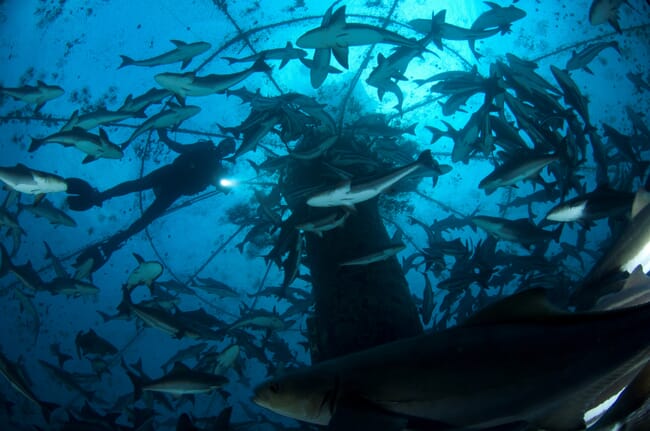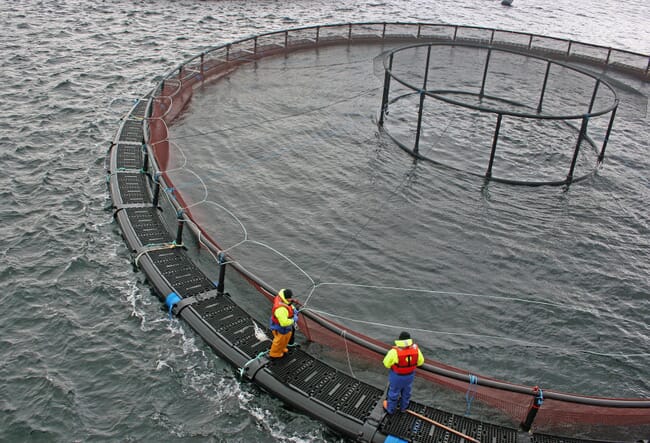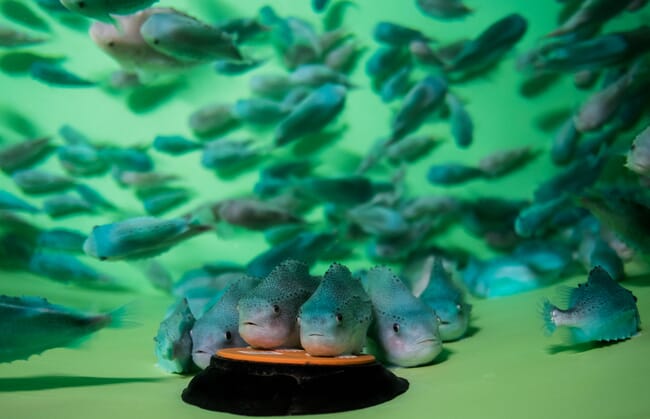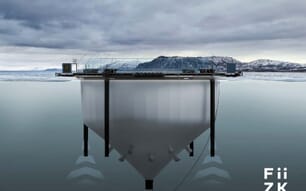A recently published study in Reviews in Aquaculture has outlined lingering concerns about fish welfare in offshore Atlantic salmon farming. The researchers explain that moving farms into open water leaves them (and the fish they produce) more exposed to the elements. This means that farming systems need to be revamped – simply transporting a near-shore sea pen into open water won’t suffice.

© Open Blue
In addition to re-tooled equipment, farm managers must account for the way powerful waves and strong currents impact the fish. This is especially true in fish farms that want to use cleanerfish to combat sea lice infestations. Their research suggests that two popular cleanerfish species, lumpfish and ballan wrasse, won’t be able to thrive in offshore farms. These farms need to identify new strategies to combat sea lice.
The argument for – and against – offshore aquaculture
Moving aquaculture away from near-shore environments comes with multiple advantages. Moving aquaculture into open water means it won’t interfere with human activities in coastal areas. This will reduce complaints from communities surrounding fish farms and could improve popular perceptions of the industry.
From a farm management perspective, water flow conditions are better in offshore environments. This means that wastes are easily removed and diluted, leaving the fish with improved water quality. The flow conditions can also lead to improved oxygen and salinity measures, giving farmers a productivity boost. Water temperatures in offshore cages tend to be more stable than coastal temperatures. Though the research isn’t well established, it’s likely that the risk of pathogen transmission between aquaculture sites will be reduced since they’re more spread out.

© Gael Force
There are some drawbacks to offshore environments, however. Existing practices in salmon aquaculture need to be overhauled to accommodate the strong currents, waves and rough weather conditions experienced offshore. The Atlantic salmon industry has to make large investments in technology, equipment and infrastructure to make offshore farming viable.
Farming activities like sea lice treatment will become more complicated offshore, especially if sites rely on cleanerfish to sustainably de-louse fish. Though some evidence suggests that migratory species like Atlantic salmon can withstand the prolonged storms and extreme currents, cleanerfish may not be able to cope with conditions offshore.
Are cleanerfish safe in offshore cages?
The main welfare concerns for offshore aquaculture stem from environmental factors. The extreme conditions are challenging for species like Atlantic salmon but could be potentially lethal for cleanerfish.
Offshore water temperatures raise initial concerns. Lumpfish are a cold-water species and cannot withstand water temperatures above 18°C, which is within a suitable range for Atlantic salmon. Ballan wrasses thrive at 25°C; this temperature is lethal for Atlantic salmon. Cleanerfish could face welfare challenges the moment they’re deployed in the cage.
Morphology is another concern. Ballan wrasse and lumpfish are smaller than growing Atlantic salmon. They have lower swimming capacities and could experience difficulties if they have to compete with larger species for feed.
In a similar vein, Atlantic salmon are migratory can withstand prolonged periods of high-speed swimming – the stronger currents seen in offshore locations may only become a welfare issue if they linger for days at a time.
Lumpfish on the other hand have a globiform body shape and poorly developed tail muscles. They haven’t evolved to be sustained swimmers.

© Terje Aamodt
Ballan wrasse won’t easily adapt to offshore cages either. They rely on their pectoral fins to swim, which works well when manoeuvring in rocky reef habitats, but isn’t suitable for prolonged high-speed swimming. If these species are exposed to offshore waves and storms, they are likely to become fatigued or injured by colliding with other fish. The prolonged stress will negatively impact their performance – they won’t be able to remove sea lice.
Though the researchers believe that Atlantic salmon can be raised at offshore sites without compromising their welfare, they do not think cleanerfish can thrive in exposed farming conditions. Offshore fish farms will need to find different de-lousing strategies going forward.




